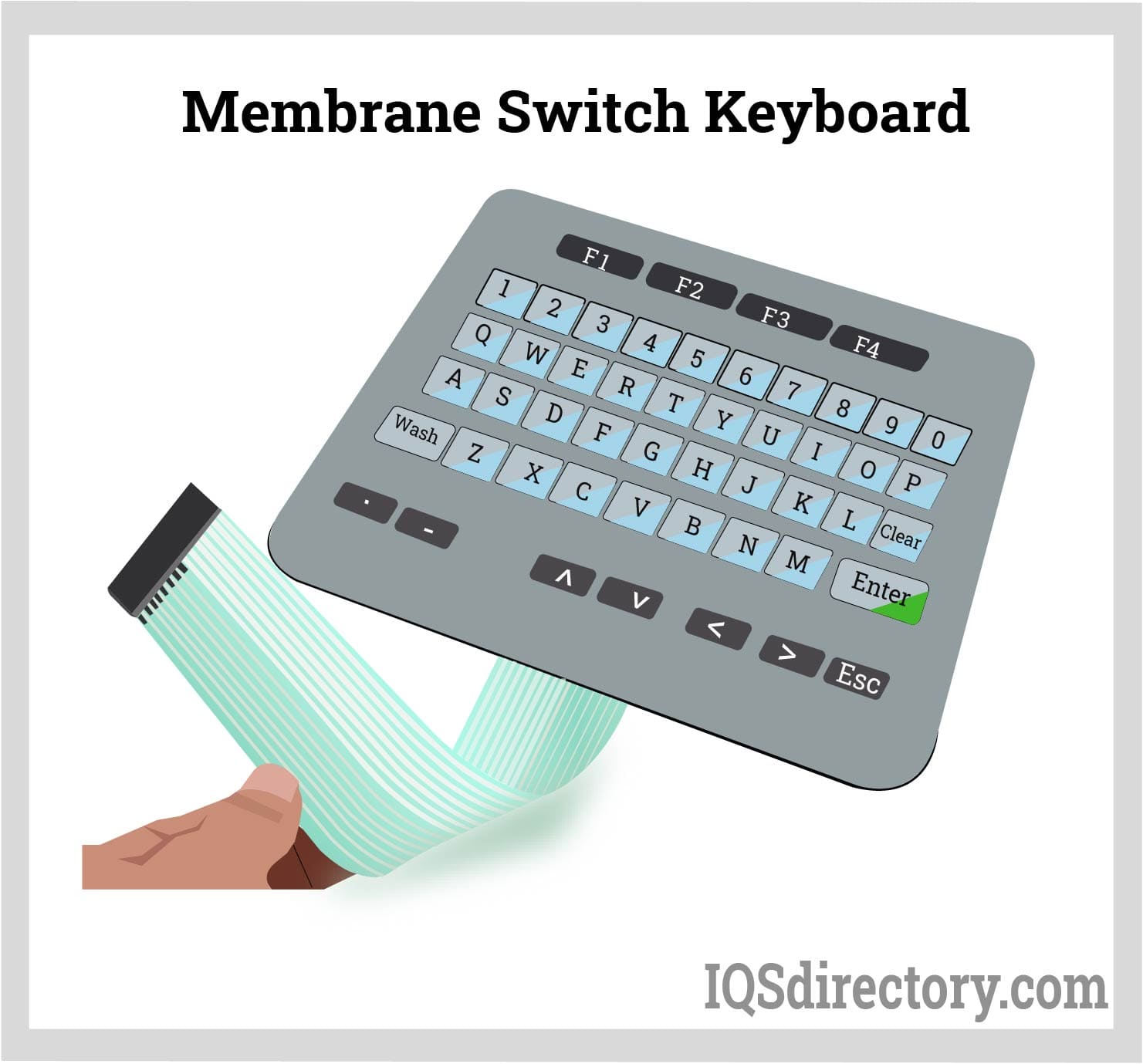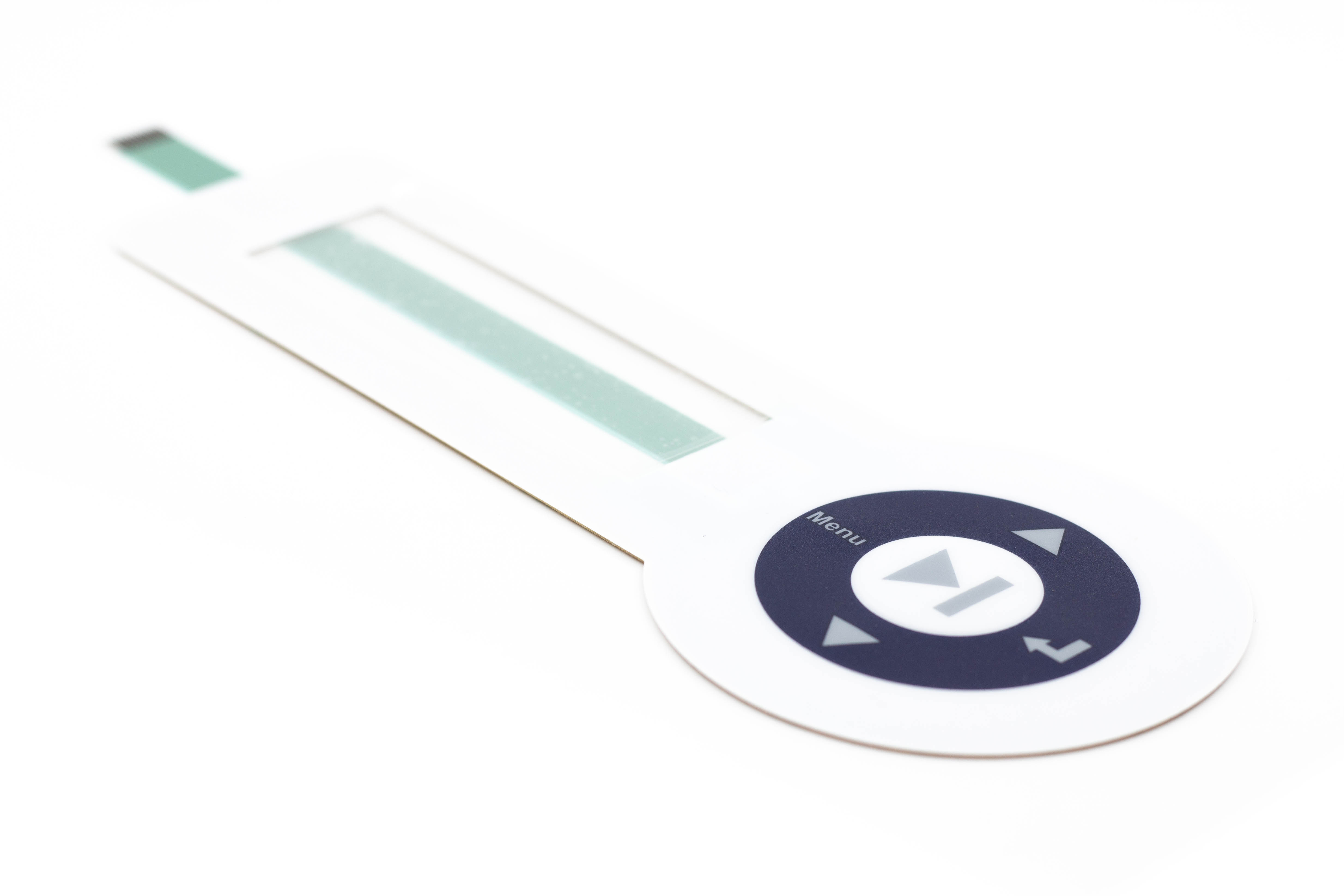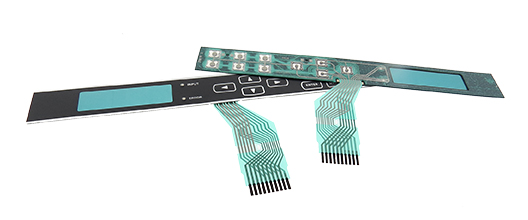The complete guide about membrane switch customization
Wiki Article
The Production Refine Behind Membrane Switch: What You Required to Know
The production process behind membrane switches over combines mindful style, material selection, and quality assurance. It starts with comprehending the complexities of membrane button style and progresses via different stages, consisting of material choices and printing strategies. Each stage plays an important role in making sure functionality and sturdiness. Nonetheless, the complexities of layer building and construction and the strenuous screening requirements might reveal insights that are not immediately noticeable. What lies beyond these fundamental elements?Recognizing Membrane Change Design
Membrane layer switches may show up straightforward at first glimpse, their layout involves elaborate factors to consider that guarantee performance and longevity. The design process begins with a comprehensive understanding of individual needs, consisting of the interface's intended application and environmental aspects. Ergonomics is an essential aspect, as the format has to facilitate ease of use while making sure that responsive responses meets user expectations.Moreover, the layering of components, such as graphic overlays, adhesive layers, and conductive traces, should be exactly crafted. membrane switch. This split setup not just affects the button's responsiveness yet also impacts its durability. Interest is offered to the securing strategies utilized to safeguard versus wetness and dirt, which could compromise performance. Additionally, design considerations encompass aesthetics, where color design and aesthetic clearness improve user experience. Eventually, the design of membrane layer changes balances performance, individual experience, and sturdiness, making sure that they satisfy the demands of numerous applications successfullyProducts Utilized in Membrane Change Production
When choosing materials for membrane switch production, it is vital to ponder both performance and resilience. The primary products include polyester and polycarbonate films, which provide adaptability and stamina. These movies are often coated with sticky to ensure appropriate bonding to substratums. Conductive inks, normally made up of silver or carbon, are critical for producing electrical connections within the button, enabling for dependable operation.Additionally, a safety layer, such as a hard coat, is regularly related to boost scratch resistance and durability. The selection of backing material, such as acrylic or foam, can significantly influence the switch's responsive feeling and overall customer experience. Different ecological variables, including temperature level and moisture, should guide material choice to ensure peak efficiency in details applications. Ultimately, the right combination of materials adds to the membrane switch's performance and life-span, making informed selections important for makers.The Printing Refine: Creating Video and Text
The printing procedure in membrane layer switch manufacturing plays a considerable function in creating top notch graphics and message. Numerous visuals style methods are utilized to guarantee visual appeal and functionality, while mindful ink option approaches are crucial for durability and efficiency. Recognizing these components is essential for accomplishing best lead to membrane layer button style.Graphic Layout Techniques
Graphic style strategies play a necessary role in the printing procedure of membrane switches, as they define exactly how graphics and message will eventually show up on the end product. Reliable graphic style involves the calculated usage of designs, typefaces, and shades to improve readability and aesthetic charm. Developers commonly make use of vector graphics for scalability, making sure that photos remain sharp at various sizes. Furthermore, focus to comparison and alignment is crucial, as it affects customer communication and aesthetic quality. The consolidation of branding aspects, such as logo designs, have to be taken care of with care to maintain brand integrity. Overall, thoughtful graphic style methods contribute significantly to the performance and appearance of membrane layer buttons, affecting individual experience and product performance.Ink Selection Methods
Selecting the appropriate ink is vital for accomplishing the wanted aesthetic quality and longevity in membrane layer button production. Numerous ink types are made use of, including solvent-based, water-based, and UV-curable inks. Each kind uses distinct characteristics, such as resistance, flexibility, and attachment to environmental factors. Solvent-based inks are commonly preferred for their durability and lively colors, while water-based inks are a lot more eco-friendly yet might have limitations in adhesion. UV-curable inks offer rapid curing and robust efficiency. In addition, color matching techniques guarantee that the selected inks line up with style specifications. Ultimately, the choice of ink should think about elements such as application method, substratum compatibility, and end-use demands to achieve exceptional lead to membrane switch graphics and text.Layer Building and Setting Up

Product Choice Refine
A cautious option of materials is essential in the manufacturing process of membrane switches, as it directly affects capability and toughness. The main materials utilized include polyester, polycarbonate, and numerous conductive inks. Polyester is frequently favored for its outstanding resistance to chemicals and abrasion, making it ideal for severe settings. Polycarbonate, on the various other hand, offers exceptional clarity and effect resistance, which is valuable for applications needing presence and effectiveness. Conductive inks, generally composed of silver or carbon, are essential for producing reputable electrical paths. Additionally, the selection of sticky products affects the general honesty of the button - membrane switch. Evaluating variables such as environmental direct exposure, tactile comments, and aesthetic demands overviews producers in picking the best products for their specific applicationsLayer Bond Strategies
Adhering layers in membrane button construction is a crucial procedure that guarantees performance and long life. Numerous adhesion methods are utilized to safeguard perfect bonding between layers, which commonly include using adhesives, warm, and stress. Pressure-sensitive adhesives (PSAs) are generally made use of for their ease of application and immediate bonding abilities. In addition, thermal bonding strategies can be used, where warmth is made use of to turn on glue buildings, safeguarding a solid bond. The selection of attachment approach greatly relies on the products navigate here included and the certain application demands of the membrane switch. Correct placement and consistent application of adhesives are vital to stop flaws, protecting the switch runs properly throughout its desired life expectancy.Quality Assurance Steps
Guaranteeing top quality control throughout the layer construction and setting up of membrane layer switches is essential for keeping performance and reliability. This procedure usually involves numerous important steps, consisting of complete evaluations at each phase of production. Suppliers use innovative testing approaches, such as peel tests and bond assessments, to confirm the integrity of layer bonds. Furthermore, aesthetic evaluations are performed to identify any type of issues in printing or material variances. Environmental conditions, such as temperature level and moisture, are very carefully kept track of to ensure ideal curing and bond. In addition, regular calibration of equipment assists keep precise manufacturing standards. By carrying out these top quality control actions, manufacturers can significantly lower the risk of product failure, guaranteeing that the last membrane layer changes satisfy the required requirements and consumer assumptions.Evaluating and Quality Assurance Measures

Technologies in Membrane Layer Switch Technology
As innovations in innovation continue to evolve, membrane layer switches are profiting from cutting-edge advancements that enhance their capability and individual experience. One notable technology is the combination of capacitive touch technology, which enables more receptive and user-friendly interface. This change not only boosts aesthetic appeals but additionally decreases mechanical damage, prolonging the life-span of the switches.Additionally, developments in visuals overlay materials have actually resulted in boosted resilience and resistance to ecological elements such as dampness and UV light. These materials now supply improved quality and brightness, additional boosting the visual appeal.Furthermore, the consolidation of clever technology is changing membrane layer switches right into interactive control board, enabling connectivity with IoT tools. This connection fosters a smooth customer experience, leading the way for applications in numerous sectors, from healthcare to consumer electronic devices. Jointly, these developments setting membrane layer switches over as crucial elements in modern-day tool design.Often Asked Concerns
The length of time Does the Membrane Layer Switch Manufacturing Process Take?
The duration of the membrane layer button production procedure can differ considerably. Elements such as complexity, materials utilized, and manufacturing quantity influence timelines, with common production varying from a couple of days to a number of weeks for conclusion.What Are the Usual Applications for Membrane Layer Buttons?
Membrane layer buttons are generally made use discover here of in numerous sectors, consisting of auto controls, house devices, clinical tools, and customer electronic devices (membrane switch). Their convenience and longevity make them ideal for applications calling for straightforward user interfaces and trustworthy efficiency in diverse environmentsCan Membrane Switches Be Custom-made for Details Requirements?

What Is the Lifespan of a Common Membrane Layer Switch Over?
The lifespan of a common membrane switch differs, yet usually, it varies from 1 to 5 million cycles. Factors such as usage, environment, and material high quality considerably affect durability and overall performance in time.

Are Membrane Changes Eco-friendly?
The environmental friendliness of membrane layer switches over differs. Some materials used may not be recyclable, while others can be environmentally friendly. The overall impact relies on making materials and practices, demanding cautious consideration during option and disposal. The production process behind membrane switches over combines mindful style, material selection, and top quality control. It starts with comprehending the complexities of membrane layer button design and proceeds via different stages, consisting of material choices and printing strategies. When choosing materials for membrane layer switch manufacturing, it is crucial to ponder both performance and resilience. A mindful option of materials is essential in the production process of membrane layer switches, as it straight influences capability and toughness. The choice of attachment technique greatly depends on the products involved and the specific application demands of the membrane button.Report this wiki page